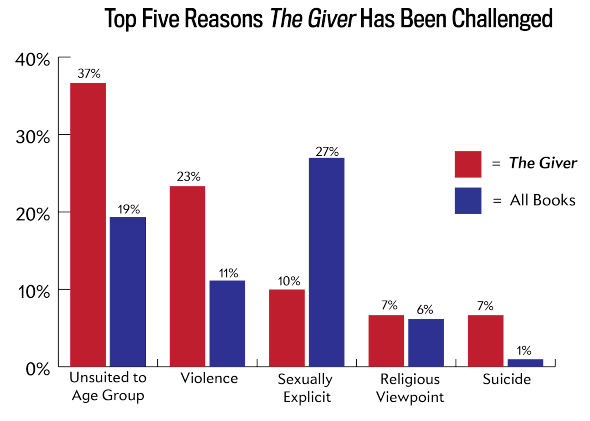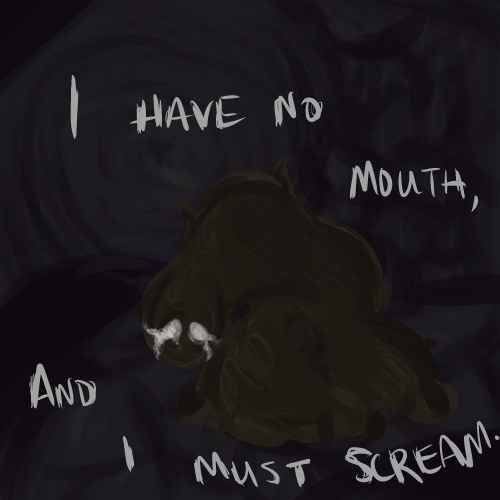
Thanks to
Word & Film for the article:
Ah, Banned Books Week. It's that week in Autumn that is welcomed into the open arms of readers everywhere, readers who cherish this celebration of freedom of speech -- and freedom of the written word. Herewith, ten more great movie adaptations of banned books.
 "Animal Farm" (1954)
"Animal Farm" (1954) The publication of George Orwell's 1945 novel,
Animal Farm, came at a time when Stalin was at the height of his reign in the Soviet Union. Orwell, clearly not a fan of Stalin's leadership philosophy, had a difficult time finding a publisher for his book, whose content was divisive and transparent in its satirical criticism of Stalin. Finally (and luckily) it found a home with Secker and Warburg Publishers. Since publication,
Animal Farm has been banned in the USSR, the United Arab Emirates, Cuba, and North Korea. Though adapted multiple times, the one to watch (after you read the book) is the 1954 animated version by Joy Batchelor. Though it deviated from the source material, it's an interesting and entertaining addition to the world of book-to-film adaptations.
"The Da Vinci Code" (2006)The Da Vinci Code, the best-selling 2003 novel by Dan Brown, introduced us to Robert Langdon and the idea that there is so much more than meets the eye in the world of Christianity. The novel struck the Catholic Church as offensive and the powers-that-be in Lebanon went so far as to ban it in the country. Its publication inspired controversy among critics, historians, and theologians. Ron Howard directed the 2006 movie adaptation starring Tom Hanks and Audrey Tatou. Critics were as divided about the film but, ultimately, no matter where you stand on its content, at its core it's a nail-biter of an adventure.
"Gone with the Wind" (1939) It didn't take long for Margaret Mitchell's 1936 Pulitzer- and National Book Award-winning novel,
Gone with the Wind, to get snatched up by Hollywood. The epic tale was brought to the big screen by David O. Selznick and Victor Fleming. Its production was massive and often troubled, but following its release in 1939, the story, script, and star power (Clark Gable! Vivien Leigh!) earned it ten Academy Award wins. The book has been challenged on and off over the years because of its realistic depictions of slavery and race issues.
"Easy A" (Inspired by The Scarlet Letter) (2010)In 2010, screenwriter Bert V. Royal teamed up with director Will Gluck to bring a (very loose) adaptation of Nathaniel Hawthorne's 1850 novel,
The Scarlet Letter, to the big screen. Together, they created a film that would join "Clueless" and "10 Things I Hate About You" in the Best Classic to Teen Dramedy Club (and would, simultaneously, launch the career of Emma Stone). The themes in Hawthorne's novel -- illegitimacy, adultery -- were quite risque for his time and led to its being challenged many times over the years.
"To Kill a Mockingbird" (1962) Harper Lee's now-classic 1960 novel,
To Kill a Mockingbird, takes place in the early 1930s in Alabama. Atticus Finch, respected attorney and father to Scout and Jem, takes on the defense of a black man named Tom Robinson. Tom has been accused of raping a white woman -- and by defending him, Atticus is opening himself up to the scorn and threats of the locals in the predominantly racist Southern town. In spite of many efforts across the world to ban Harper Lee's Pulitzer Prize-winning novel, most recently in 2013, it has sold more than thirty million copies. The 1962 movie adaptation, starring Gregory Peck, Brock Peters, and Robert Duvall, won three Academy Awards and was nominated for an additional five.
 "One Flew Over the Cuckoo's Nest" (1975)
"One Flew Over the Cuckoo's Nest" (1975) In 1962, Ken Kesey published the novel
One Flew Over the Cuckoo's Nest, set in a psychiatric hospital in Oregon. Told from the perspective of Chief Bromdem, a Native American man assumed to be deaf and mute, his observations of and insights into the worlds of his fellow patients are thoughtful. They most often focus on Randle Patrick McMurphy, a man who feigned insanity in order to serve a jail sentence in the psych ward rather than prison. The book has been challenged and banned multiple times across the country, and has been called "pornographic" and "garbage." Milos Forman brought the book to screen in 1975 with an adaptation starring Jack Nicholson, Will Sampson, and Louise Fletcher. It won five Academy Awards including Best Picture, Best Director, Best Lead Actress, and Best Lead Actor.
"Where the Wild Things Are" (2009) Spike Jonze's 2009 adaptation of the Maurice Sendak classic
Where the Wild Things Are had the perfect source material, the perfect Max (played by Max
Roberts Records), and the perfect screenwriter (Dave Eggers). (And in this writer's opinion, the perfect music.) However, in spite of its beautiful visuals and the aforementioned perfect pieces, the film didn't fare particularly well in theaters or with the critics. The book has been challenged over the years because of its dark subject matter -- though still remains a perennial favorite of so many parents.
"Of Mice and Men" (1939) This writer's last viewing of a Steinbeck adaptation took place in the theater earlier this year, with James Franco as George and Chris O'Dowd as Lennie. This is only the latest adaptation, though. The show on stage has since closed, and our recommendation is that you skip the Gary Sinise-helmed version from 1992 (starring Sinise as George and John Malkovich as Lennie) and reach further back to Lewis Milestone's Oscar-nominated 1939 adaptation. The book has been challenged over the years because of its accurate depiction of slavery in the United States.
"Sophie's Choice" (1982) William Styron's 1979 novel,
Sophie's Choice, is the story of three people sharing space in a Brooklyn boarding house in 1947. One of these three, Sophie, has survived the concentration camps that too often peppered the landscape of World War II and carries with her the guilt from a decision she made at that time. The novel has been challenged often, as recently as 2001, because of the explicit sexual content. This last attempt at banning, however, found students rightfully fighting back. In 1982 director Alan J. Pakula adapted Styron's novel for film, starring Meryl Streep, who earned her second of three lifetime Oscars (thus far) for her performance.
"The Lord of the Rings" (2001) J.R.R. Tolkien's 1954 fantasy novel,
The Lord of the Rings, which began an epic trilogy, has been adapted in numerous iterations since its publication. When Peter Jackson decided to direct a brand-new trilogy beginning in 2001, however, all previous iterations fell to the background as Jackson's creative brilliance brought new life to the story while respecting Tolkien's source material. The trilogy over the years has been challenged on grounds of being "irreligious." Regardless, the first in the series is, to date, one of the best-selling novels of all time.



















